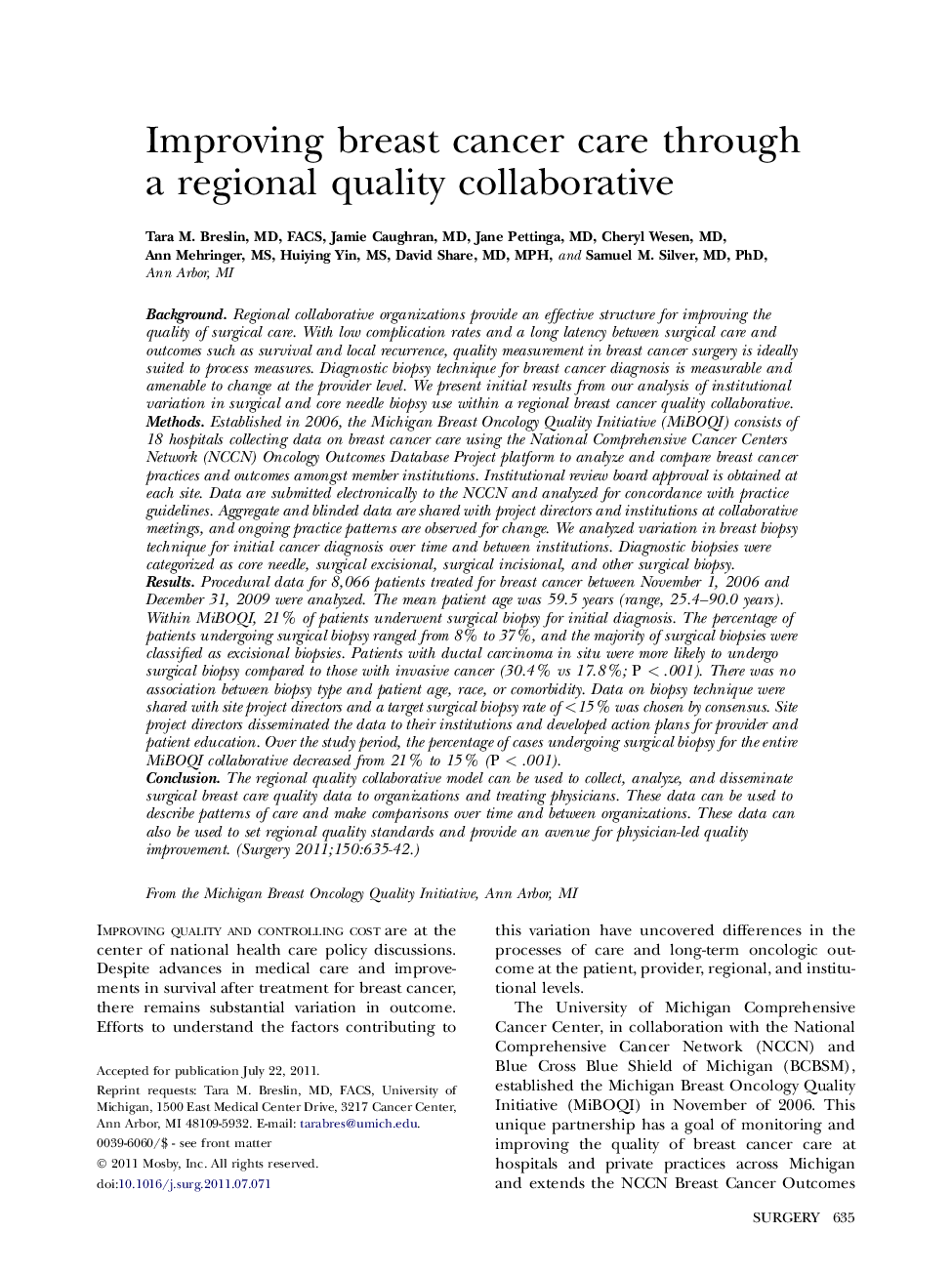| Article ID | Journal | Published Year | Pages | File Type |
|---|---|---|---|---|
| 4308564 | Surgery | 2011 | 8 Pages |
BackgroundRegional collaborative organizations provide an effective structure for improving the quality of surgical care. With low complication rates and a long latency between surgical care and outcomes such as survival and local recurrence, quality measurement in breast cancer surgery is ideally suited to process measures. Diagnostic biopsy technique for breast cancer diagnosis is measurable and amenable to change at the provider level. We present initial results from our analysis of institutional variation in surgical and core needle biopsy use within a regional breast cancer quality collaborative.MethodsEstablished in 2006, the Michigan Breast Oncology Quality Initiative (MiBOQI) consists of 18 hospitals collecting data on breast cancer care using the National Comprehensive Cancer Centers Network (NCCN) Oncology Outcomes Database Project platform to analyze and compare breast cancer practices and outcomes amongst member institutions. Institutional review board approval is obtained at each site. Data are submitted electronically to the NCCN and analyzed for concordance with practice guidelines. Aggregate and blinded data are shared with project directors and institutions at collaborative meetings, and ongoing practice patterns are observed for change. We analyzed variation in breast biopsy technique for initial cancer diagnosis over time and between institutions. Diagnostic biopsies were categorized as core needle, surgical excisional, surgical incisional, and other surgical biopsy.ResultsProcedural data for 8,066 patients treated for breast cancer between November 1, 2006 and December 31, 2009 were analyzed. The mean patient age was 59.5 years (range, 25.4–90.0 years). Within MiBOQI, 21% of patients underwent surgical biopsy for initial diagnosis. The percentage of patients undergoing surgical biopsy ranged from 8% to 37%, and the majority of surgical biopsies were classified as excisional biopsies. Patients with ductal carcinoma in situ were more likely to undergo surgical biopsy compared to those with invasive cancer (30.4% vs 17.8%; P < .001). There was no association between biopsy type and patient age, race, or comorbidity. Data on biopsy technique were shared with site project directors and a target surgical biopsy rate of <15% was chosen by consensus. Site project directors disseminated the data to their institutions and developed action plans for provider and patient education. Over the study period, the percentage of cases undergoing surgical biopsy for the entire MiBOQI collaborative decreased from 21% to 15% (P < .001).ConclusionThe regional quality collaborative model can be used to collect, analyze, and disseminate surgical breast care quality data to organizations and treating physicians. These data can be used to describe patterns of care and make comparisons over time and between organizations. These data can also be used to set regional quality standards and provide an avenue for physician-led quality improvement.
